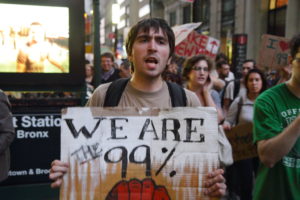The Mainstream Media’s Big Disconnect: Why They Don’t Get Middle America
The top journalists covering the elections are out of touch. No wonder they're missing this year's big stories. Republican presidential candidate Donald Trump, left, is interviewed by CNN's Anderson Cooper in this still from the network's presidential town hall event in March. (CNN via YouTube)
1
2
Republican presidential candidate Donald Trump, left, is interviewed by CNN's Anderson Cooper in this still from the network's presidential town hall event in March. (CNN via YouTube)
1
2

Republican presidential candidate Donald Trump, left, is interviewed by CNN’s Anderson Cooper in this still from the network’s presidential town hall event in March. (CNN via YouTube)
Independent journalism is under threat and overshadowed by heavily funded mainstream media.
You can help level the playing field. Become a member.
Your tax-deductible contribution keeps us digging beneath the headlines to give you thought-provoking, investigative reporting and analysis that unearths what's really happening- without compromise.
Give today to support our courageous, independent journalists.






You need to be a supporter to comment.
There are currently no responses to this article.
Be the first to respond.